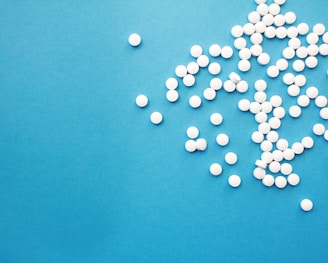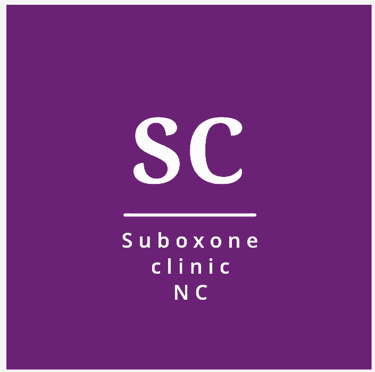Which Is Better For OUD Treatment: Suboxone Or Sublocade?
Medication for Addiction Treatment (MAT) is a treatment strategy that combines prescription medication with behavioral therapy to treat opioid use disorder (OUD). Buprenorphine has been demonstrated to be highly successful in the treatment of OUD in numerous investigations. As a result, it is frequently employed in MAT. Buprenorphine is a partial opioid agonist that reduces cravings and prevents withdrawal by occupying and activating opioid receptors in the brain. Suboxone and Sublocade are two brand-name buprenorphine medicines. There are significant distinctions between the two, which means one may be better for you than the other.
What exactly is Suboxone? doctors that prescribe suboxone
The Food and Drug Administration (FDA) has approved Suboxone for the treatment of OUD. The drug is used to treat withdrawal symptoms, cravings, and to avoid recurrence. It consists of two drugs: buprenorphine and naloxone. The combination of these two drugs is effective in the treatment of OUD. Naloxone discourages buprenorphine usage whereas buprenorphine decreases withdrawal symptoms and cravings. The patient would not feel euphoric or high if he or she snorted or injected the medicine. Suboxone comes in four different strengths and is available as a film or tablet. When placed behind the tongue or between the cheek and gums, it dissolves. The buprenorphine-to-naloxone ratio in each Suboxone formulation is 4:1.
Suboxone Adverse Reactions doctors that prescribe suboxone
Suboxone, like many other drugs, can cause a variety of negative effects, including:
Headaches
Stomach Ache
Vomiting and Nausea
Constipation
Insomnia
Arms and legs swollen
In the mouth, there is a loss of sensation.
If Suboxone is started while there are other opioids in the system, it might cause withdrawal. As a result, it's recommended to start it with the help of a healthcare practitioner.
What exactly is Sublocade? doctors that prescribe suboxone
Sublocade is a newer FDA-approved drug for opioid use disorder (OUD) that only contains buprenorphine. This means it decreases cravings by blocking opiate receptors. Sublocade is offered as subcutaneous injections in two strengths. Sublocade can only be safely injected under the skin by a medical practitioner. Sublocade is a great alternative to other buprenorphine-containing drugs like Suboxone. It is excellent for persons with OUD who have problems remembering to take their daily dose of medication because it is an injectable, long-acting treatment. Sublocade is frequently administered to patients who have been prescribed Suboxone but are still struggling with problematic opiate use.
Sublocade Adverse Reactions doctors that prescribe suboxone
Suboxone and Sublocade have comparable side effects because they both contain buprenorphine.
Fatigue
Headaches
Problems with sleep
Vomiting and nausea
Constipation
Pain in the mouth or throat
In the mouth, tingling sensations
Sublocade, like Suboxone, can cause withdrawal if begun while other opioids are still in the system. As a result, it's recommended to start it with the help of a healthcare practitioner.
Comparison of Suboxone and Sublocade doctors that prescribe suboxone
Suboxone and Sublocade are distinct in a number of respects. When picking which drug to take, it's critical to grasp the distinctions.
The following is a list of the five most prevalent distinctions.
1. Abuse Possibility doctors that prescribe suboxone
Sublocade includes solely buprenorphine, unlike Suboxone, which contains both buprenorphine and naloxone. Even though buprenorphine is relatively safe, it does have some opioid agonist effects because it is sometimes injected or snorted. If someone misuses buprenorphine through one of these methods, naloxone, when added to buprenorphine formulations, prevents any subjectively favorable opioid agonist effects (euphoria or "high"). In principle, the inclusion of naloxone to Suboxone would make it less likely to be abused than Sublocade. However, because Sublocade is only given by a doctor, the person who is being treated does not have access to further doses. It actually has a reduced risk for abuse than Suboxone if given correctly.
2. Dosage Variations doctors that prescribe suboxone
Suboxone is taken in a single dose once a day. It's available in four different dose formulations, each with a 4:1 buprenorphine-to-naloxone ratio.
0.5 mg naloxone / 2 mg buprenorphine
1 mg naloxone / 4 mg buprenorphine
2 mg naloxone / 8 mg buprenorphine
3 mg naloxone / 12 mg buprenorphine
Sublocade comes in two strengths and is injected once a month.
0.5 mL / 100 mg
1.5 mL/300 mg
3. Administration and formulations doctors that prescribe suboxone
Suboxone is available in two different sublingual forms: film and tablet. When applied on the inside of the cheek or beneath the tongue, both disintegrate. Patients can take Suboxone at home because it is available in sublingual formulations.
Subcutaneous injections of Sublocade are available. They can only be administered by healthcare professionals.
Suboxone is commonly started early in a treatment program for patients with OUD since it is available in lower dosages and has a flexible dosing schedule. Patients who have stabilized on Suboxone can simply switch to Sublocade after a week of Suboxone treatment.
4. Forms that are generic doctors that prescribe suboxone
Sublocade is not available in generic form at this time. Sandoz and Alvogen, on the other hand, are two businesses that make FDA-approved generic Suboxone.
5. Cost comparisons doctors that prescribe suboxone
Generic drugs are typically more expensive than brand-name prescriptions. Suboxone is less expensive than Sublocade because of this.
Suboxone and Sublocade treatment doctors that prescribe suboxone
Residential or outpatient MAT programs are available. Most patients choose buprenorphine-based drugs because of their flexibility and the fact that buprenorphine is safer than methadone. People with OUD can preserve their independence and live their lives while receiving treatment in outpatient MAT programs. The most effective treatment for OUD is MAT. The combination of MAT and psychotherapy offers a complete approach to OUD treatment: the medicine blocks withdrawal and cravings, reducing the chance of relapse. Simultaneously, counseling provides patients with the coping skills they require to remain drug-free. Suboxone clinic's high-quality MAT programs offer a wide range of services to persons in recovery, including:
Sessions of individual or group counseling
Confidential phone and video consultations with your doctor
From the comfort of your own home, you can join online support groups.
Making preparations to avoid relapse
Case management that is tailored to the individual
Professionals with years of experience who sincerely care about their patients
Assistance in locating community resources
You can attain a strong and long-lasting recovery with the help of these services.


